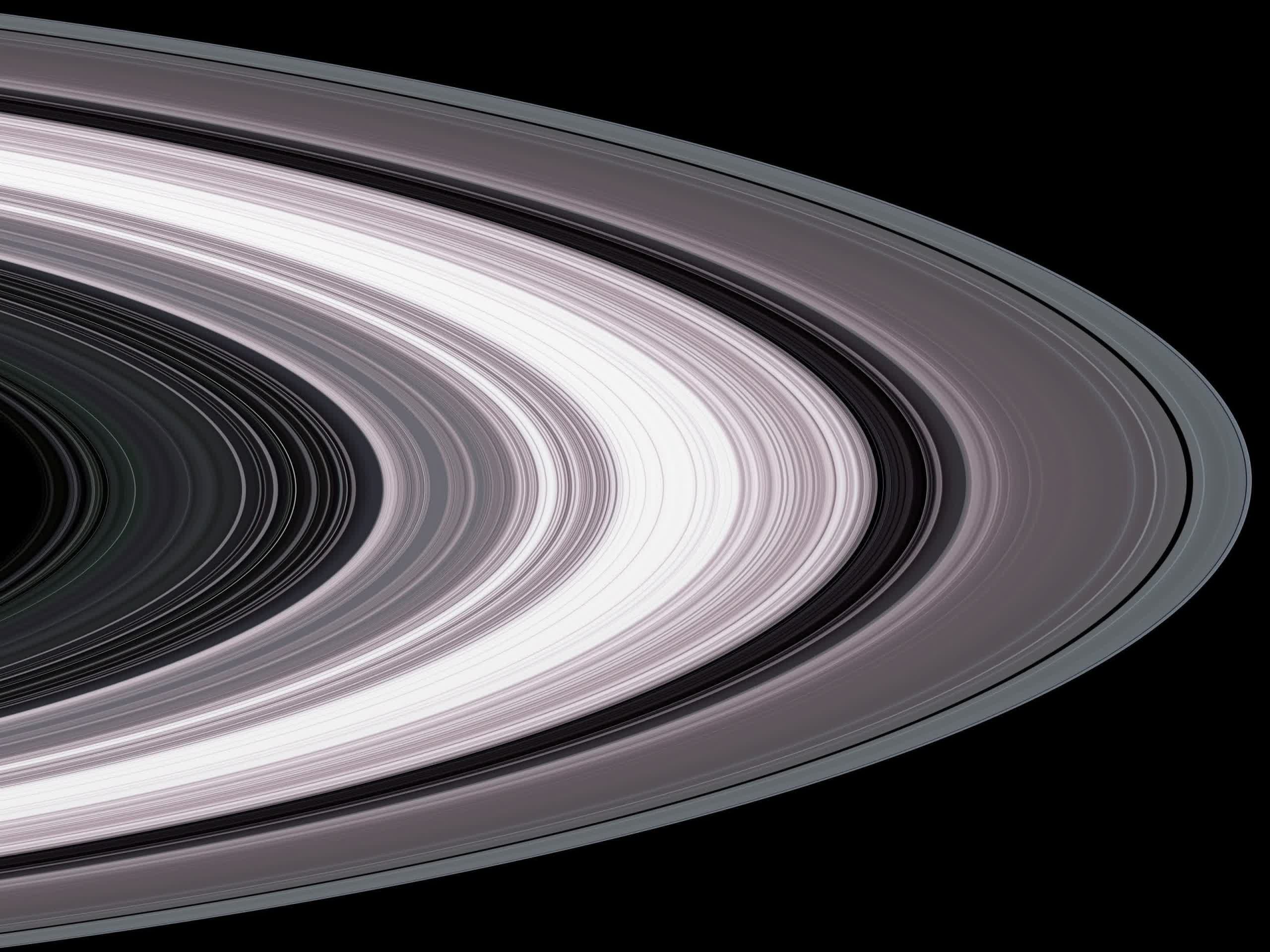In brief: Saturn's rings are one of the most iconic formations in our solar system, but researchers have never been sure how or when they formed. A new simulation indicates they are far younger than previously assumed and that Saturn's moons have experienced rapid change in the cosmologically recent past.

A recently published study suggests that Saturn's rings formed after two icy moons collided a few hundred million years ago. Other evidence indicates that the orbiting dust and some of the planet's moons didn't emerge concurrently with Saturn and the rest of the solar system.
The high-resolution smoothed particle hydrodynamics simulation (animation below) supports the possibility that two icy moons similar to Dione and Rhea slammed into each other less than a billion years ago. Much of the resulting debris settled within Saturn's Roche Limit – the point beyond which gravity would grind any moon-like mass into a ring.
Furthermore, fragments drifting outside the Roche Limit could have coalesced into the planet's current moon system. Observations of Saturn and its moons from the Cassini mission, which ended in 2017, strengthen the theory with evidence implying the rings and moons are very young.
Saturn's rings constantly receive foreign material from micrometeoroid bombardments. However, the amount accumulated suggests this activity is more recent than the formation of Saturn and most of the rest of the solar system 4.5 billion years ago.
Additionally, the rings are losing mass and will eventually disappear as particles drift into the gas giant's atmosphere. The current loss rate indicates that it couldn't have persisted for more than a few hundred million years. Additionally, the moons' tidal properties and Rhea's orbital inclination show they reached their current forms recently.
The new findings conflict with prior theories about Saturn's rings and moons, which maintained that they are about as old as the rest of the solar system. Older models proposed that early moons or comets could have collided or split apart during the chaotic early days of the solar system between 3.8 and 4.1 billion years ago when violent impacts were far more common. Another recent formation hypothesis theorized that an Iapetus-sized moon orbiting between Titan and Iapetus fell into Saturn's Roche Limit around 100 million years ago but requires additional measurements.
Another interesting finding regarding Saturn's moons is that they are heating the planet's atmosphere, according to recent data analysis from multiple missions. This evidence could help astronomers find ringed planets outside our solar system.
Further analysis of the Cassini data reveals that the Saturnian moon Enceladus contains all six ingredients necessary for life. The study marks the first time scientists have detected phosphorus outside of Earth.
https://www.techspot.com/news/100353-saturn-rings-may-remnants-two-moons-collided.html